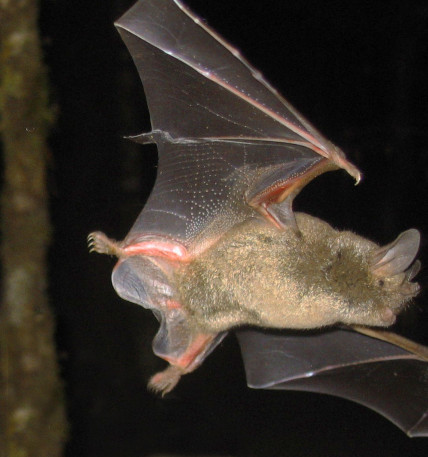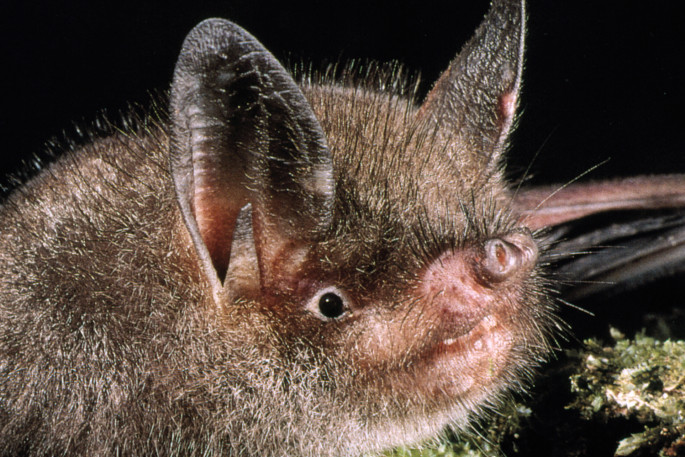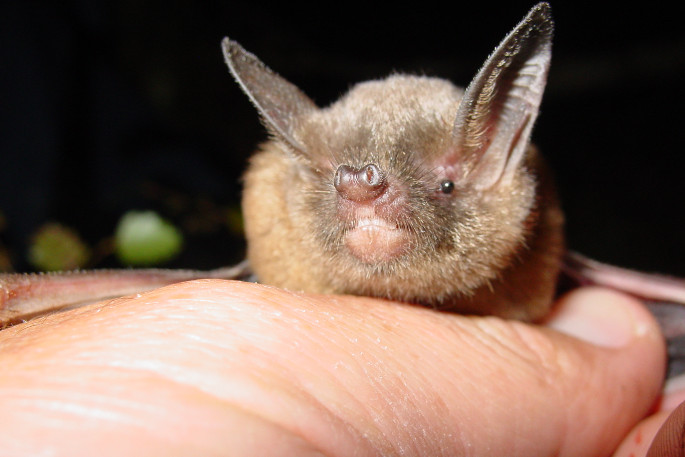New Zealand's native bats, also known by their Māori name pekapeka, are thriving at sites in Fiordland and the central North Island due to Department of Conservation - DOC - predator control.
Long and short-tailed bats were once common in New Zealand but have disappeared from many areas due to habitat loss and being eaten by rats, possums, stoats, and feral cats.
These tiny mammals roost together and rear their young in hollow trees, where they are especially vulnerable to attack.
Close monitoring of bats over many years in the Eglinton valley near Te Anau and Pureora Forest Park west of Lake Taupō has shown a significant upswing in populations of short-tailed bats due to predator control, says DOC Principal Science Advisor Colin O'Donnell.
'Short-tailed bats in the Eglinton valley have done really well since predator control began in the late1990s with the population increasing on average by 8 per cent per year,” says Colin.
'At Pureora, where we've tracked short-tailed bats for the past eight years, predator control has allowed the population to grow by 10 per cent annually.”

Short-tailed bat. Photo: H Edmonds/DOC.
However, Colin says long-tailed bats appear particularly sensitive to rat predation, requiring very low rat numbers over large areas for them to thrive.
'Ten years ago, long-tailed bat survival in the Eglinton valley was dropping after each beech mast when predator numbers soared. But since 2010, predator control over larger areas, timed to suppress rat plagues, has allowed many more bats to survive.
'In 25 years of monitoring we've seen the long-tailed bat population turn around—from declining at 5 per cent to increasing by 4 per cent per year.”
Unfortunately, the long-tailed bats at Pureora appear to still be in decline. Long-tailed bats can fly up to 20 km a night and at Pureora range widely across farm and forestry land where they are at greater threat from predators.
'Research shows that large-scale predator control over at least 3500 ha, keeping rats to very low levels, is needed to protect long-tailed bats. Linking up forest areas and other habitats with predator control may be key to the survival of long-tailed bats at Pureora,” says Colin.
Rat and stoat numbers in the beech forest-clad Eglinton valley spike after each beech mast (seeding) but remain low between masts, while in the warmer mixed podocarp and hardwood forest at Pureora predators tend to be consistently high.

Short-tailed bat. Photo: Rod Morris.
DOC controls predators in the Eglinton valley using combinations of sustained trapping, ground-based toxins, and periodic aerial 1080 over large areas to prevent predator plagues following beech masts.
In Pureora, toxins in bait stations are used to protect bats over 900 ha, timed for when they are raising their young in maternity roosts. Predator control at nearby Waipapa will also be helping to protect their wider habitat.
Monitoring bats is intensive work and involves catching a sample of bats from a colony and either attaching identifying bands or PIT tags (passive integrated transponders). In following years, the bats are either recaptured or logged as they enter or leave maternity roosts. Annual survival is estimated from the number of marked individuals detected year by year. DOC staff that monitor bats are specially trained and take hygiene precautions when handling bats, including hand washing and using gloves.
The Eglinton valley and Pureora are two of the few places where both species of bats remain. The Eglinton has one of only two populations of short-tailed bats on mainland South Island, with the other in the Murchison Mountains. Pureora is a stronghold for the central sub-species of short-tailed bat, which is in decline.
Bat populations continue to decline at unmanaged sites.
DOC also monitors bats at other sites around the country including Puketi Forest, Rangataua and Whirinaki in the North Island, and Ōpārara, Te Maruia, south Canterbury and the Murchison Mountains in the South Island.



0 comments
Leave a Comment
You must be logged in to make a comment.